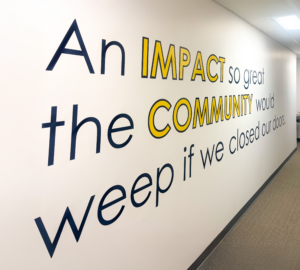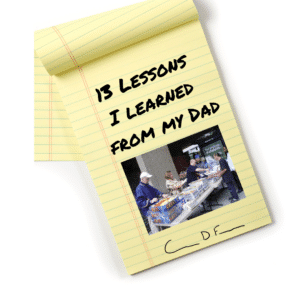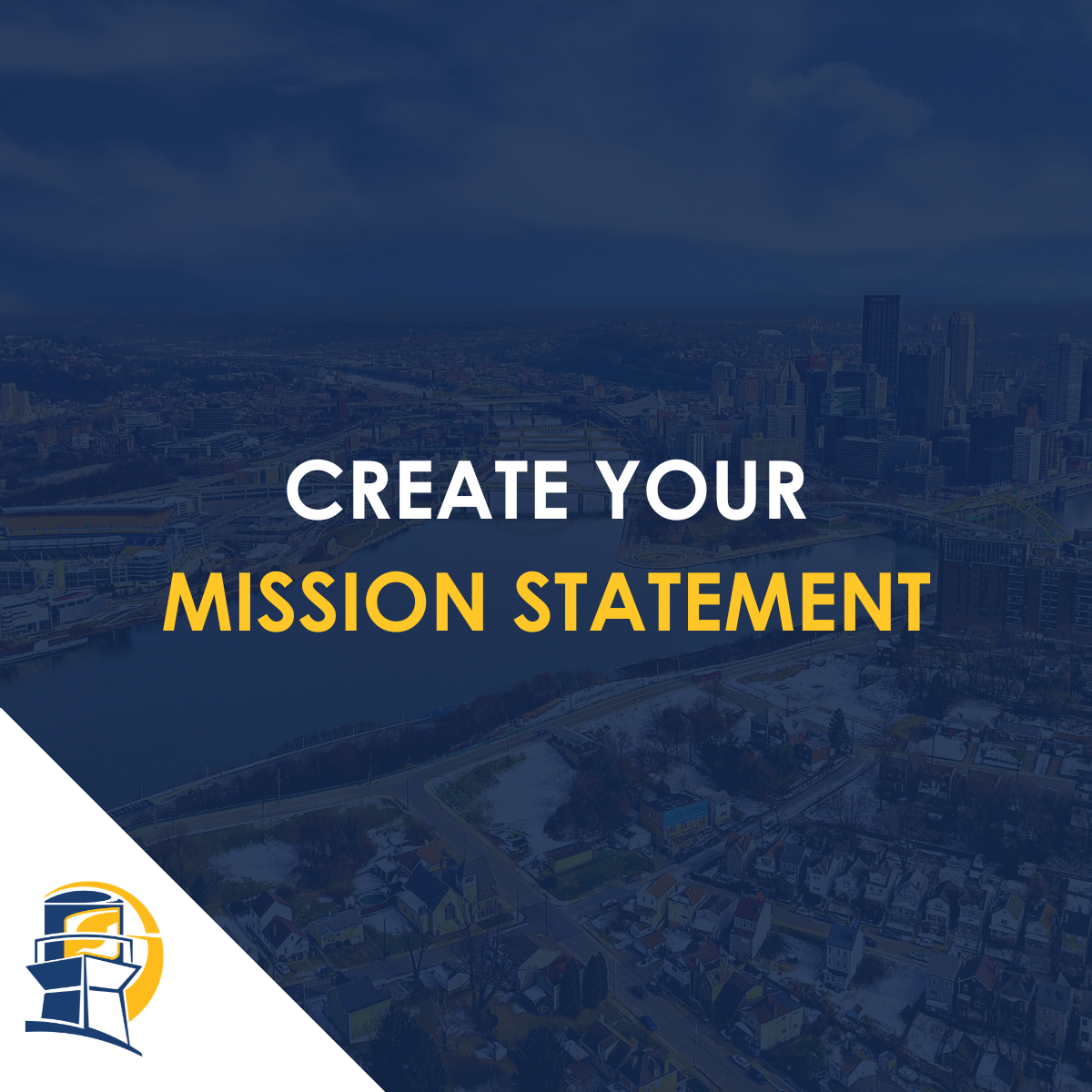There are a few exercises I believe everyone should do in life to discover their calling and create a compass to guide their life. They are:
- Discover and declare Your Why
- Define your Core Values
- Create your Mission Statement
- Create your Vision for your future
- Create your Life Roles
I have done each of these for my personal life, my family, and my vocation and I encourage you to do the same. This takes time and intentionality to complete these, but I believe it will pay huge dividends and allow you to live a fulfilling live you were called to live.
I believe:
- Your Mission Statement guides every decision you make
- Your Core Values define your culture
- Your Vision is where we you are going
- Your Why is the driving force behind what you do
So, in short if:
A vision is where you are going, a mission guides your decision, and a why is why the driving force behind what you do, then an extremely simplified example is the statement:
“We are going to Disneyland because we value family experiences.”
The vision is the preferred future of being in Disney Land.
The why is we value family experiences.
The mission could be something along the lines of “We value experiences over things, which would be a tool to help you decide to take action here.
In this blog I will talk about how to create your mission statement.
What is a mission statement?
We have a saying at Beratung, our mission statement guides every decision we make. A mission statement is a clear and concise statement that gives you guidance in every decision you make in your life, family, or company.
This should not be confused with your “why” which is the driving force behind what you do. I believe a Why is deeply embedded in us from God and we discover and declare our why. A mission of a company can changes over time, where a why should not. For example, “The March of Dimes” started out with the mission to eradicate polio. Once Dr. Salk’s vaccine had been effective to eliminating the need for the organization, they changed their mission to birth defect prevention. Their “why” did not change however, they were still fighting for the health of children. A why should not change unless it was not properly discovered in the first place.
At Beratung we all have one job; our Mission but different roles to execute on that job.
If this is the one job, we all have and we should use it to guide every decision we make then to be useful, a mission should be short…if people cannot remember it and internalize it in 1 day it’s too long. The shorter the better. The more concise the better and you can let it guide you.
Mistakes with a mission statement
I served on a board of directors years ago. At one of my first meetings a new board member asked what the mission statement was. The CEO confidently flipped over their name badge and read it. Then shortly after he finished the COO with a confused look flipped over his name badge to find they each had a different mission statement. There were several issues here.
First, there were two different statements from two senior leaders. If they were not clear on it how would anyone else be and how could you effectively use it as a tool to make decisions?
Second, they both needed to read their name badge to recite it. That is too long and how can you make multiple decisions daily with this as your framework.
Lastly, they by their own actions showed they did not have a clear decision-making framework in front of their board and team members gathered there.
In this story this was a great example of how mistakes can lead to bigger and better outcomes. That simple mistake lead to an overhaul of the organization including vision, mission, why and branding that laid the framework for unprecedented growth leading them to have a profound impact on their community.
An effective mission statement along with core values empowers your team with the framework to make decisions for the organization that line would match the leadership’s decisions 80% of the time. (If you go higher than 80% your organization may be too homogeneous and not able to see blind spots or adapt). This allows you to stay focused and row in the same direction and most importantly be more effective with delegation.
So, a mission is a compelling statement that will guide every decision you make, like your personal guiding star.
How to create yours.
My process to create a mission statement starts with Declaring your Why and Defining your Core Values.
- Seek God for discernment.
- Use your core values and why as a framework as you ask yourself; What is the one “job” or “overall task” for you or your family or your company?
- Use “spaghetti approach” and write down any job you can think of. At this point you can keep it long, and you will shorten it later.
- Narrow your list down to 5 or less.
- Seek advice from others about the content not the length or style.
- Once you have picked one, narrow the statement down to the essentials. Work to shorten it in phrase that are memorable, quotable and easy to internalize without losing the meaning. This part is typically the hardest and longest part.
- Test drive them to see if it feels right.
- Keep seeking advice and input.
- When it feels right, share them with everyone!
Internalize don’t memorize!
Creating your mission statement is useless if you do not use it to guide your decisions. I love asking others what their mission is. If they cannot tell them to me, is it really their “mission?” Does it really guide every decision they make?
If you are going to take the time to develop this important tool, you must use them to get the return on your investments. If I get somebody that can recite it, I ask them to tell me how they use it daily.
Most people I have ever asked this cannot recite it quickly and confidently and if they do they typically cannot tell me why it’s important or how they apply it. Memorizing it is not enough; you have to internalize it to where it becomes part of you.
To help me internalize my mission I read my personal mission, my family mission, and my company mission out loud every single day. The act of verbalizing them, not just reading them is important.
Next, I have them displayed in multiple locations that I see. Once a month I write out my personal, family and company mission statements (along with my prayers, affirmations, missions, whys, roles, and visions) in my journal. The act of writing these 12 times a year helps internalize them and then I use my journal as my tool to read them out loud.
In addition to having them in my journal, they are physically displayed in many places. My companies are displayed in all of our office locations and my home office. I have my personal mission on my desk in my office and my home office. My family ones are framed our wall.
In addition, I talk about my missions with others. At a company level we discuss them every single Tuesday, not just read them, we discuss what they mean and how we live them. We use them in our everyday language and social media posts. I talk to others about my personal core values frequently and as a family we discuss them.
I also create systems of accountability with my mission statements. In my company, we use the mission when reviewing decisions team members have made. On a personal level I have people that know them that call me out if I don’t live by it. On a family level my wife and I will call each other out when we do not live by it and use it for our decisions.
Another important way to internalize you mission is to celebrate. On a company level we celebrate our team members that live our mission. On a family level we do our best to encourage and celebrate when we make decisions with our mission. On a personal level through journaling, I celebrate the decisions I have made using my mission as the framework.
The best way to internalize your mission statements are to put them into practice by using them to make decisions. When you are contemplating your next big decision as a person, family, or in your company, ask yourself if your actions are in alignment with your mission. This causes you to think deeply about it and internalize it. Like anything in life there is no substitute for experience.
Lastly you need to review them at least annually in a formal way to see if they are still relevant. On a company level we do this at our annual planning meeting and at a personal and family level this is done as part of my end of the year review process.
You cannot just memorize them you must internalize them. They have to become part of the essence of who you are and who your family is and who your company is.
So, to internalize your mission, you should:
- Read it daily.
- Display it.
- Discuss it with others.
- Create accountability to it.
- Celebrate the actions of living it.
- Use it in decision making.
- Review annually for updates.
Tell us what you think.
I love helping others create their mission. If you need help, reach out. Also, if you have created your mission, I would love to hear it and how you use it. If you have a different approach, share it with us. You can leave comments on my LinkedIn or email me. If you found this helpful, please multiply by sharing it with another leader!
Beratung Mission
Empower Clients to make informed financial decisions.
We have a longer version we use when you need more context around the decision. The shorter form is what we internalize and use daily.
We provide comprehensive advice, guidance, and counseling to educate and empower our clients to make informed financial decisions so they can pursue their goals and live a fulfilling life.
My mission
I am called by God to be a passionate servant leader who lives the Gospel to empower others.
Family mission
Living our Faith in Jesus Christ by loving and serving others.
Social Media
🌟 Create Your Mission Statement to Guide Every Decision you make🌟
🔑 Ready to align your compass and steer towards a life of purpose? Dive into my latest blog where I break down the steps to create your very own mission statement. It’s a game-changer, trust me!
Here’s a sneak peek:
- Defining what a mission statement is and its importance.
- Step by step process for creating yours.
- How to internalize and use yours.
I’ve done this for myself, my family, and my work, and let me tell you, the results are beyond rewarding. Your mission becomes your North Star in every decision.
I believe every leader needs a mission, core values, compelling vision and why for their company, their family and their life.
🚀 Your Mission guides every decision you make
💡 Your Core Values define your culture
🔮 Your Vision is where you are going
💥 Your Why is the driving force behind what you do
Ready to learn more? Click the link in the comments to read the full blog and unlock the secrets to creating a mission statement that will transform the way you navigate life.
Don’t just wander through life – live intentionally with purpose! 💪🌟
Content in this material is for general information only and not intended to provide specific advice or recommendations for any individual.The opinions expressed in this material do not necessarily reflect the views of LPL Financial.

An Impact So Great Our Community Would Weep If We Closed Our Doors
Part of our 412 Vision at Beratung Advisors is to have “An Impact so Great Our Community Would Weep if We Closed Our Doors.”

Generational Planning for Yinz
After eight years, we are changing our tagline from “Guidance with a Plan” to “Generational Planning for Yinz.”

4 Keys to Hearing God’s Voice
I first learned these 4 keys to hearing God’s voice on an L3 Mastermind Retreat from my friend Andrew Reichert, and it changed my life.

Give ‘Em The Pickle
We believe that a big part of culture is shared language. We have a shared language we call the Beratung Vernacular that helps us all row in the same direction.

13 Lessons I Learned From My Dad
My father was called home to be with God 13 years ago on Thanksgiving Day, November 24th, 2011. Today would have been his 76th birthday. There is not a day that goes by that I do not think of my dad. In his memory, I wanted to share the 13 most important lessons he taught me, one for each year he has not been with me.





